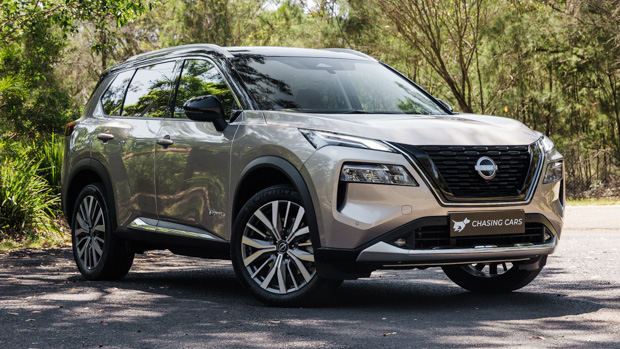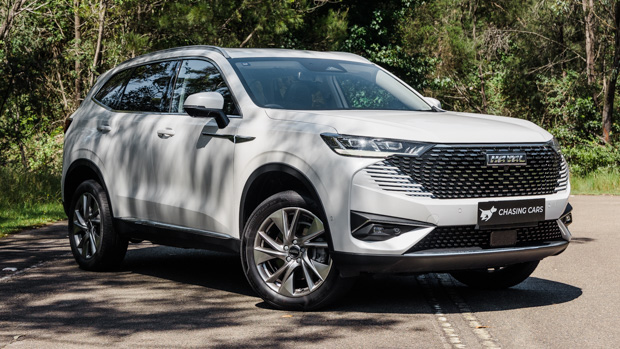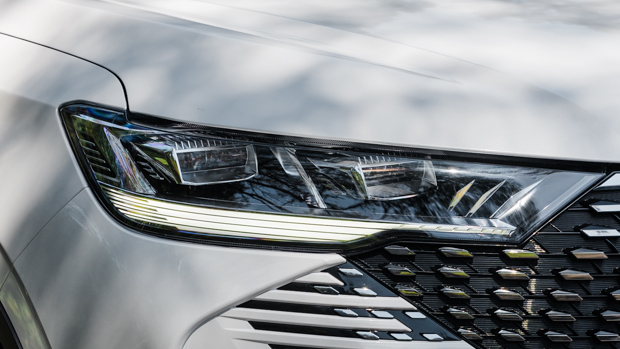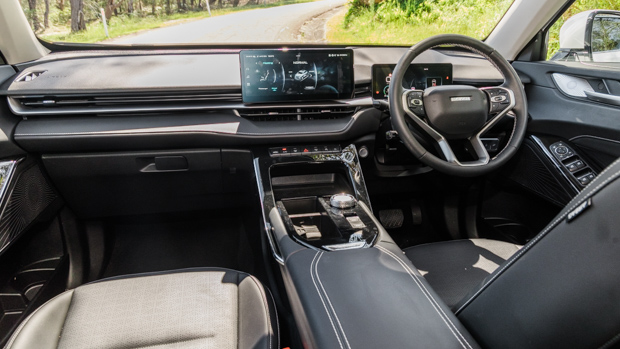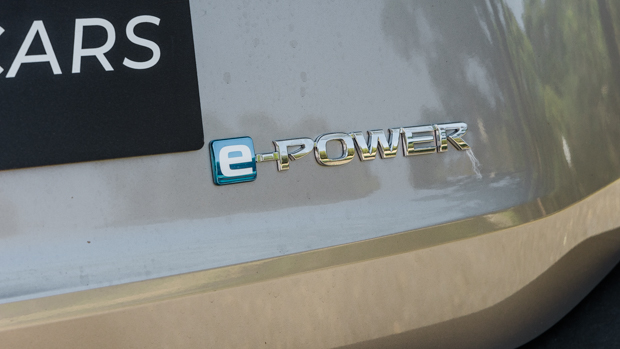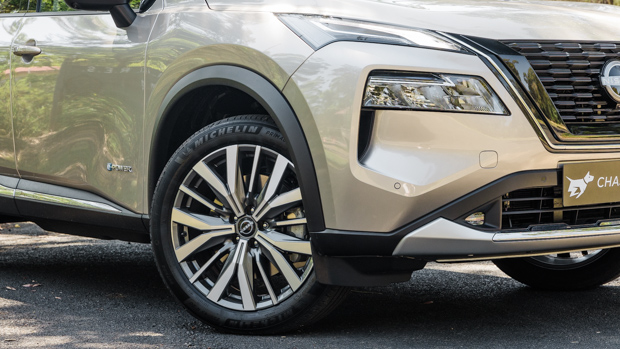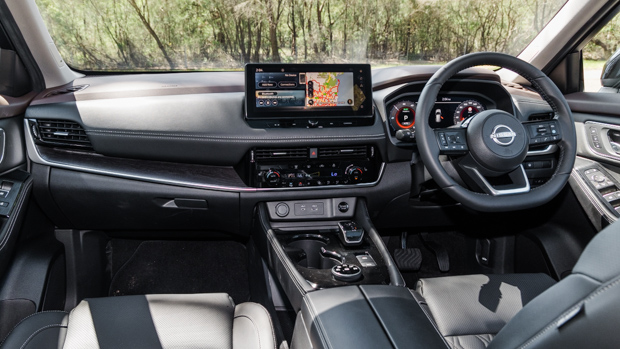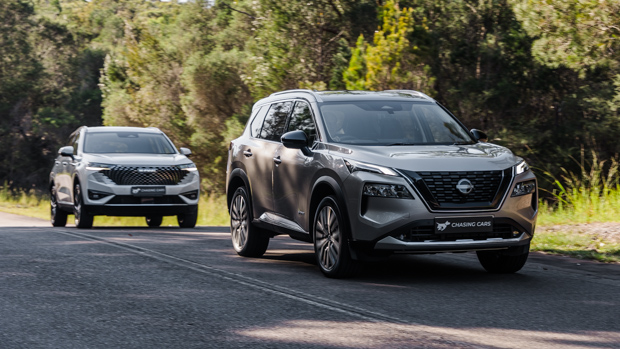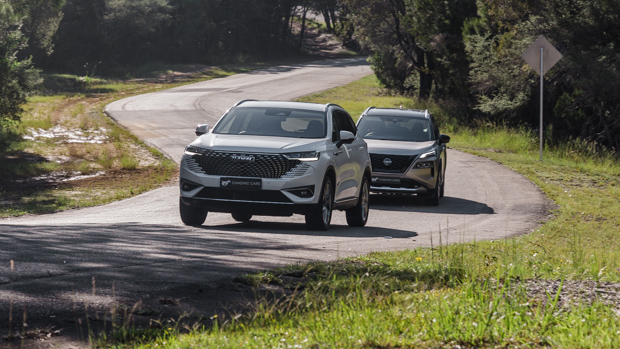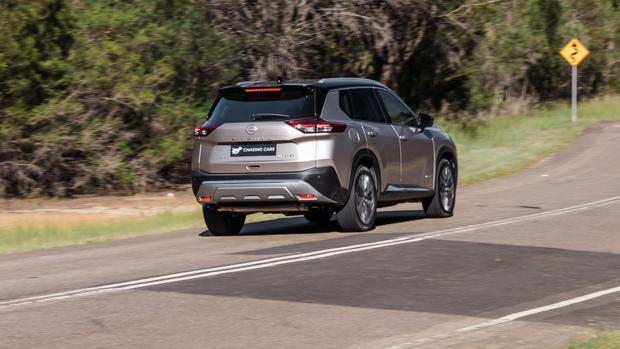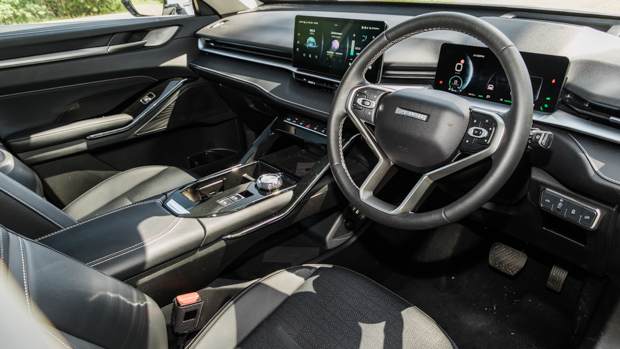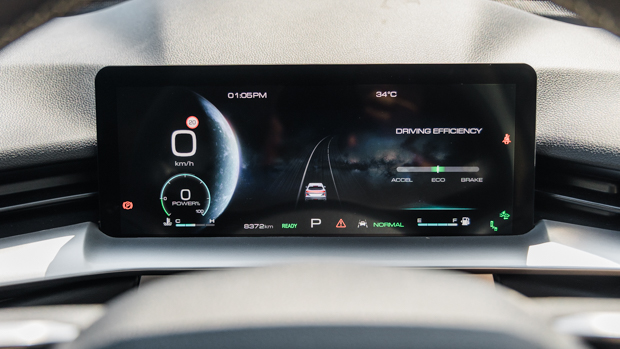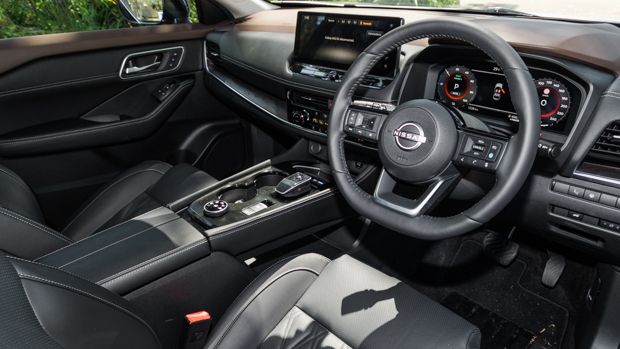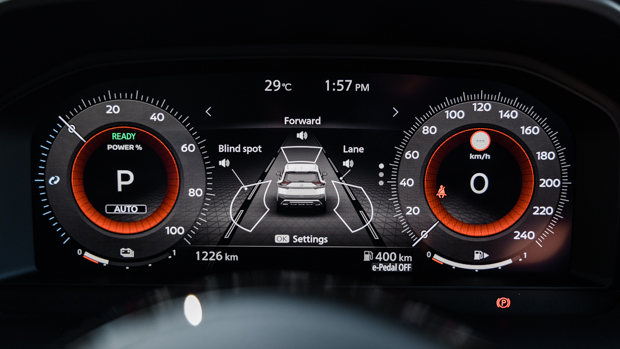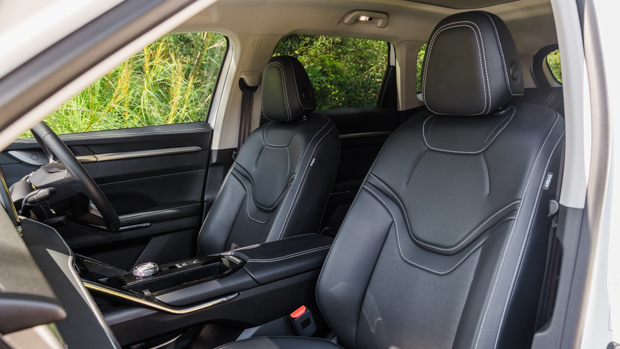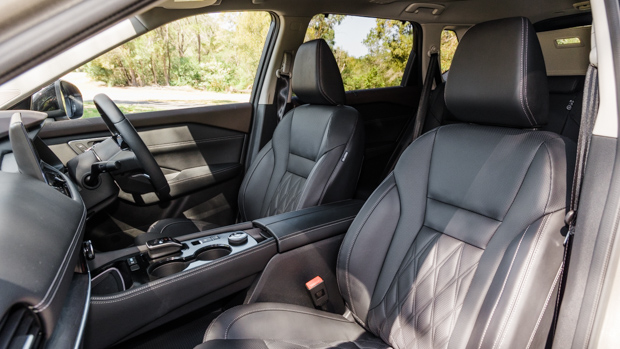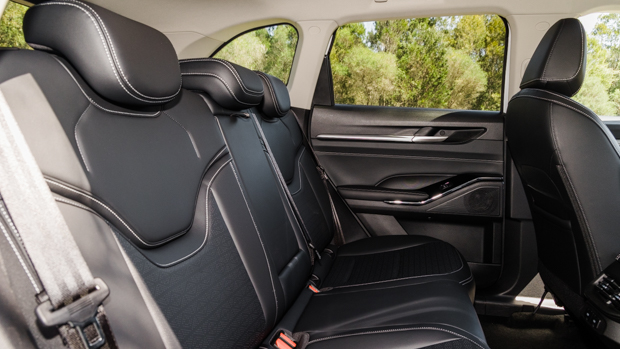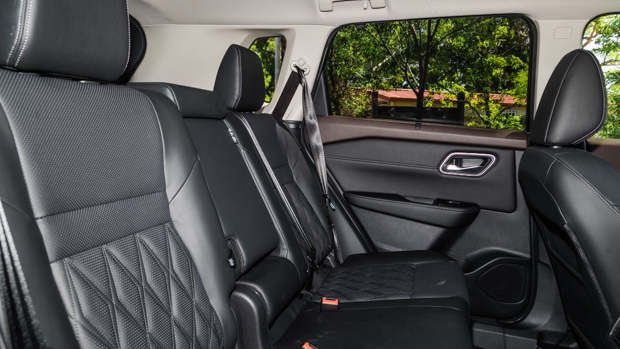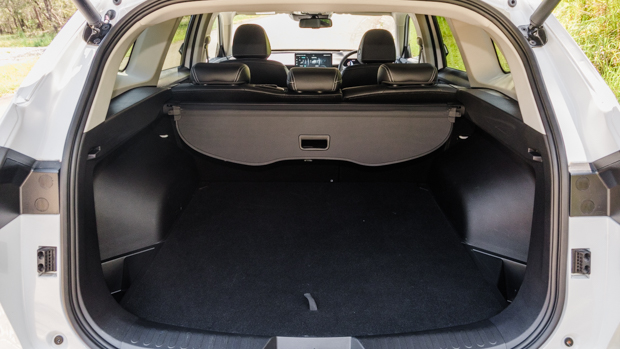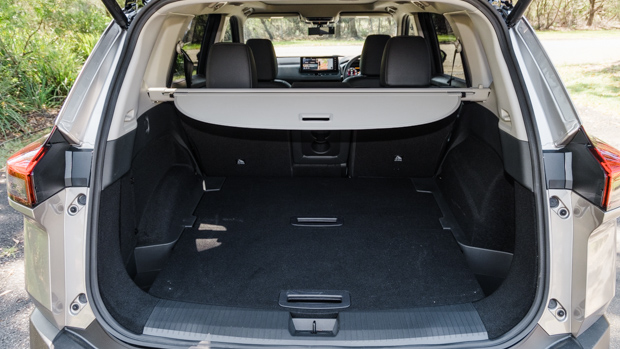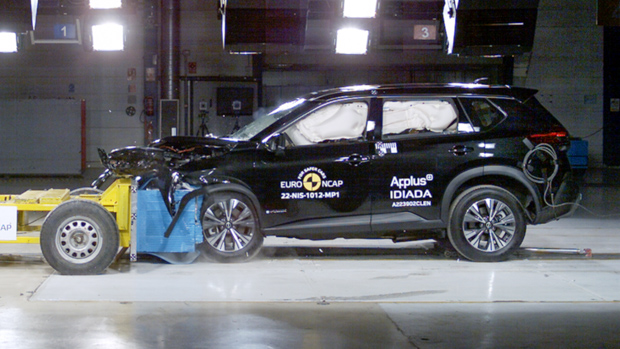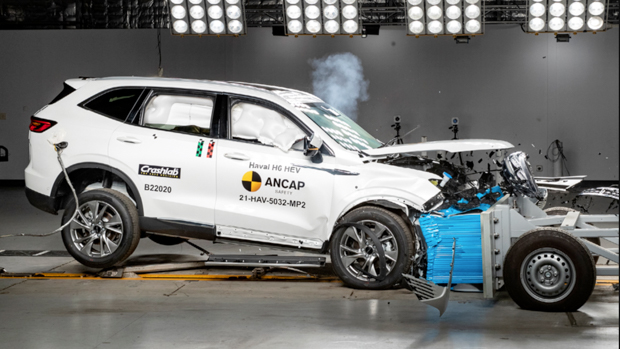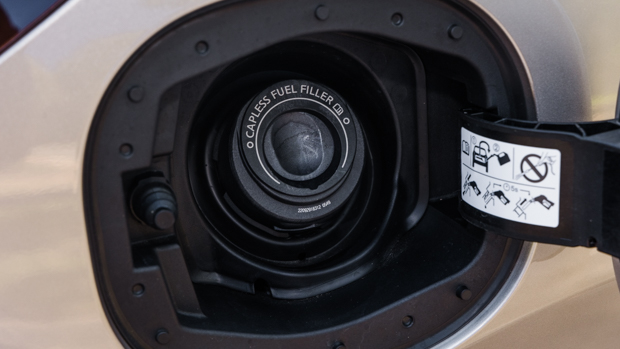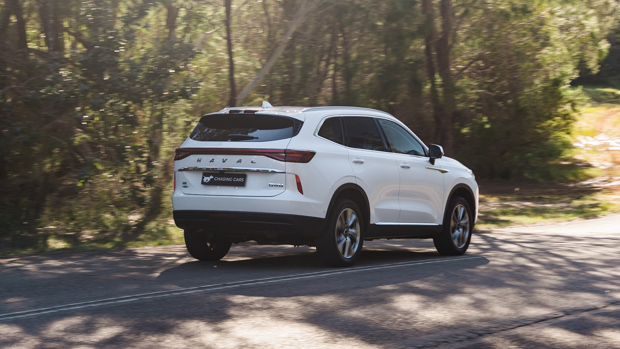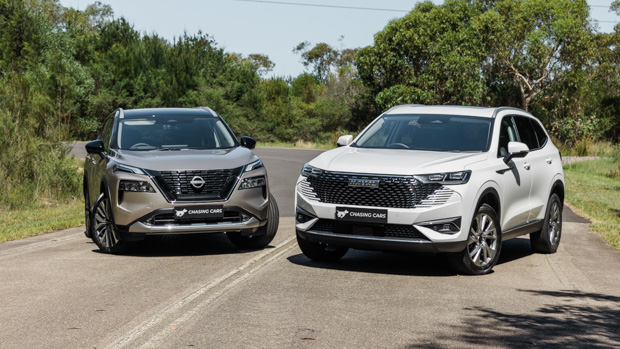-
Car Reviews
- All reviews
- Midsize SUVs
- Small cars
- Utes
- Small SUVs
- Large SUVs
- Large cars
- Sports SUVs
- Sports cars
- Vans
Latest reviews
- Car News
-
Car Comparisons
Latest comparisons
- Chasing Deals
These two hybrid-powered midsize SUVs are looking to save buyers at the petrol pump, but is it worth shelling out extra for the Nissan?
Those looking for a midsize SUV have never been more spoiled for choice. There are petrol, diesel, hybrid, plug-in hybrid and full-electric options available.
There are also examples that prioritise space, with seating for seven, and others that prioritise performance, such as the Ferrari Purosangue with its naturally aspirated 6.5-litre V12 engine that revs to 8000rpm.
For the majority of buyers in the mainstream midsize SUV segment, they’re looking for practicality and fuel efficiency, two aspects the SUVs that I will be comparing today have in droves.
In one corner there is Nissan’s all-new X-Trail Ti-L with its rather complex E-Power system, and in the other corner is the relatively new Haval H6 Ultra Hybrid.
Though both of these SUVs, tested here in range-topping guises, look to serve a similar purpose for Australia buyers, they actually differ significantly, starting with driveaway pricing. In New South Wales buyers will have to fork out $46,990 for the H6 Ultra Hybrid, and a rather loftier $61,771 for the Nissan.
So with a $15,000 difference on the table, we’re going to find out if forking out the extra dosh for the Nissan is a worthwhile premium investment.
Starting with the $46k Haval H6 Ultra Hybrid, it’s powered by a 1.5-litre four-cylinder turbo-petrol engine that’s paired with an electric motor on the front axle. All up, this system produces 179kW and 530Nm of torque. Power is sent exclusively to the front wheels through a CVT.
On the outside, 19-inch alloy wheels are standard, and if buyers want to opt for any colour that isn’t Hamilton White, they’ll have to fork out an extra $495.
Moving to the inside, artificial leather upholstery is standard, as are the power front seats that are heated and ventilated. A heated leather steering wheel is also thrown in for good measure.
On the tech front, it gets a 10.25-inch digital cluster, a 12.3-inch infotainment display and a head-up display. This system supports wired Apple Carplay and Android Auto, but doesn’t get satellite navigation.
Other standard features include the wireless phone charger, panoramic sunroof, and the power tailgate at the rear. It’s worth noting that the climate control system is limited to just two zones, so rear seat passengers miss out on controls.
When it comes to the $62k Nissan X-Trail Ti-L E-Power, it’s similar story on the standard features front, but the hybrid system is vastly different.
Beneath the bonnet sits a 1.5-litre three-cylinder turbo-petrol engine that makes 106kW/250NM. This engine simply acts as a generator for the electric system, which consists of two electric motors, one for each axle.
With a motor at each axle, the X-Trail gets an electric all-wheel-drive system with a peak output of 157kW. As each electric motor isn’t able to deliver all its torque at once, Nissan quotes two different figures for this, with 330Nm at the front and 195Nm at the rear.
On the outside, 20-inch alloy wheels come as standard, as does the Scarlett Ember red paint. Opting for any other shade will incur a $735 premium paint cost, and adding a black roof for a two-tone combination comes at a $1260 premium.
Moving inside, quilted heated Nappa leather seats come as standard, as do the power controls. Unfortunately ventilated seats aren’t an option at all in the X-Trail range.
Buyers have the choice between black or tan quilted nappa leather, with both coming at a no-cost option.
Tri-zone climate control is also included, meaning rear seat passengers get fan speed and temperature control.
As for technology, the X-Trail gets a 12.3-inch digital cluster, a 12.3-inch infotainment display, and a head-up display. Wireless Apple Carplay and Android Auto are also available with this system.
A wireless phone charger, a premium Bose sound system, electric tailgate, and panoramic sunroof roof round out the interior features of the Nissan.
As far as standard kit goes, these two vehicles are reasonably neck and neck, which means that the Haval takes the win with its far cheaper price tag.
In saying this, the X-Trail does get nicer (proper) leather time and the overall build quality of the Nissan is better, and this is something that would likely only get more noticeable throughout the vehicle’s lifecycle.
With 179kW and 530Nm of torque on offer, the Haval H6 Ultra Hybrid packs a reasonable amount of grunt for its size. But in saying that, it quickly became clear that the weak point of this hybrid-powered SUV’s system is in its power delivery.
With a CVT sending power to the front wheels exclusively, the immense amount of electric torque on offer overwhelms the front tyres with little effort, which leads to some rather hairy moments on the road.
This tendency for fizzy performance at the front end became clear during the road test of the H6 Ultra Hybrid, which landed on a rather drizzly few days of testing in New South Wales.
While driving at speeds of up to 60km/h in the wet, pressing the accelerator would result in a laughable amount of wheelspin at the front wheels, leading to questions being asked back in the Chasing Cars office regarding the traction control system’s tuning.
Things only got worse on this front when the throttle was pressed whilst cornering, leading to a hefty helping of understeer that would push the SUV’s nose towards the outside of the corner – something that’s rather disconcerting in a small hot hatch, let alone an SUV of this size.
Seemingly at the other end of the driving dynamics spectrum is the X-Trail Ti-L E-Power, as it was a dramatically improved, sure-footed departure from the Haval in the moist conditions.
With just 157kW on offer, and a torque figure from both front and rear motors that still doesn’t match that of the Haval even if it could be combined, you’d be forgiven for thinking that the Nissan’s performance would be a decent downgrade.
In reality, the Nissan feels far quicker on its feet thanks to its electric all-wheel-drive system, and this is backed up by the Chasing Cars performance testing figures. Where the H6 Ultra Hybrid managed a 7.74-second 0-100km/h run, the Nissan convincingly beat it at 6.78 seconds.
Ride quality is one area where the Haval has the Nissan beat, as the H6 seems to offer a far more loamy ride across different surfaces.
Part of this could be down to the wheel size differences, with the H6 getting smaller 19-inch wheels, meaning it has an increased amount of sidewall to absorb harsh bumps and the like.
This softer ride comes at the expense of overall handling, with the X-Trail offering better body control whilst cornering. The H6 also has a tendency to body roll excessively through the bends, whereas the Nissan minimised this through its damping rigidity.
Steering feeling is another element that differs quite significantly between the two SUVs. Where the Nissan’s system has a bit of weight behind it and instils confidence in drivers, the same can’t be said about the H6, as its vagueness does quite the opposite.
Combined with the aforementioned lack of grip at the front end and you’re left with quite the hair-raising H6 driving experience in wet conditions.
Most of the differences between these SUVs can be put down to overall refinement, with the Haval feeling like it’s a result of less R&D.
Both vehicles are pleasant to drive on the motorway, with little road noise present, but it’s once drivers start exploring dynamics that the real quality of the Nissan’s on-road experience comes to the fore..
Despite the Haval’s reasonably cheap price tag, the interior is an impressive exercise of luxury on a budget.
Soft-touch faux leather surfaces are abundant throughout the cabin, including dash, door cards and centre armrest.
Once you look past the novelty of a soft-touch cabin, drivers will quickly realise that it’s a bit of a facade, with the synthetic material feeling quite cheap in some places.
It’s a similar story for the large dash-mounted displays in the H6, which look very impressive, but lack an operating system that backs up this premium aesthetic.
This isn’t to say that the Haval system is particularly bad, but it feels quite sluggish in the face of other systems on the market. It also isn’t the most intuitive system to use, and doesn’t follow the same iPad-like theme as the majority of other brands have gone with.
Given the $15K jump to the Nissan, it should come as no surprise to hear that the interior is a significantly nicer place to be. Quilted nappa leather covers the seats and the faux leather adorning much of the rest of the cabin is soft to touch and feels extremely high quality.
The centre console and a portion of the dash is covered in a woodgrain-like black plastic covering, which might not be to everyone’s taste, but it’s a better option than the commonly used piano black in my eyes.
The only offensive piece of piano black plastic I found in the Nissan was beneath the infotainment screen where the audio controls are. I use the word offensive, as when the sun is at a certain height, it can reflect perfectly off the panel and into the eyes of the driver.
The digital displays are a true highlight in the X-Trail Ti-L, as not only are they large and bright, but Nissan’s operating system is one of the best to use.
With wireless Apple Carplay and Auto Android Auto included it’s not very likely that owners will find themselves using the native system features very often, but I’d say that the quality of the content is at the level of phone-mirroring options.
As for the digital cluster, there’s a lot of customisation available for Nissan’s system, and the information is displayed in a way that’s very easy to read on the go.
Driver comfort isn’t a strong point for the Haval H6, as although it comes with those faux leather seats, they are reasonably unsupportive and could well become quite uncomfortable for some on long drives.
The power lumbar adjustment is a nice inclusion here, but I don’t think it’s enough to offset the lacklustre nature of these seats.
The X-Trail isn’t too much better in this regard, though the minor bolstering adjustment and the quilted leather trim do make things a little more comfortable.
A similar amount of roominess is offered in the second row by both vehicles, but the Haval has the Nissan beat with its seemingly flat floor. This means that middle seat passengers won’t have to awkwardly straddle a transmission tunnel.
The only big difference between the two in the second row is the fact that the Nissan gets tri-zone climate control, whereas the Haval makes do with a dual-zone system. In other words, rear seat passengers in the Nissan get both fan speed and temperature controls.
The same goes for the boot, as neither of the two SUVs in hybrid form are offered with a third row of seating, and both have about the same amount of luggage space.
Technically speaking, the H6 Hybrid’s 600L slightly trumps the X-Trail E-Power’s 575L boot space. And it’s worth noting that while the H6 hybrid doesn’t lose any space due to its batteries, the Nissan is down 10 litres on the non-hybrid five-seat variant.
It’s a similar story for the spare wheels, as neither SUV actually has one. Instead, both make do with a glue kit that can be found beneath the boot.
As for towing, the X-Trail E-Power is rated to a braked capacity of 1.6 tonnes, while the H6 Ultra Hybrid is down 100kg at 1.5 tonnes.
Both the Haval H6 Ultra Hybrid and the Nissan X-Trail E-Power are offered with similar advanced safety features. The only difference being that the Nissan systems feel more refined on the road.
This is most obvious in the lane-keep assist system, where the X-Trail passively keeps the vehicle in the centre of the lane through subtle inputs, while the H6 is a lot more brash with its control of the wheel.
As for official ratings, the X-Trail received a five-star ANCAP rating in 2021, scoring particularly high across the board. The scores were; adult occupant protection (91 percent), child occupant protection (90 percent), vulnerable road user (74 percent) and safety assist (97 percent).
The Haval H6 was awarded the same five-star ANCAP rating in 2022, although received lower scores in each segment: adult occupant protection (90 percent), child occupant protection (88 percent), vulnerable road user (73 percent) and safety assist (81 percent).
Nissan X-Trail E-Power safety inclusions:
Haval H6 Ultra Hybrid safety inclusions:
Cost of ownership varies greatly between the two SUVs, with the Haval coming out on top in every metric.
Though the Nissan makes use of a far more complex hybrid system, it seems that its powertrain prioritises driving refinement over fuel economy.
While Nissan claims a combined figure of 6.1L/100km for this X-Trail E-Power, during testing Chasing Cars managed to better this at just 5.6L/100km, but this still wasn’t a match for the frugal Haval.
Even though the Haval blew out its economy claim of 5.2L/100km to 5.5L/100km, it’s still a more impressive result. Add in the fact that Nissan recommends 95 octane for the E-Power, whereas the H6 Hybrid can run on 91 octane, and the costs start to add up.
The same goes for servicing costs, as Haval’s capped price plan will cost owners just $1650 to service over a five year/50,000km period.
Nissan’s service plan extends for an extra year, but it will cost owners almost double throughout this period. A figure of $3051 is what X-Trail E-Power owners will have to fork out over the six year/60,000km period.
Finally, the win also goes to the Haval on the warranty front, as it’s covered by a seven year/unlimited kilometre plan, whereas the Nissan warranty only covers the X-Trail for five years/unlimited KMs.
As standalone products, both of these hybrid-powered SUVs serve their purpose to an impressive degree, but because this is a head-to-head comparison, only one can come out on top.
At $45,990 driveaway, the Haval H6 Ultra Hybrid is quite a bargain. The total cost of ownership will be significantly cheaper, making it all the better of an option for those looking for a midsize SUV on a budget.
Where the Haval falls short is in on-road refinement with its noisy engine and traction control system that is seemingly non-existent in wet conditions. The same can be said for the interior, which lacks the same build quality that is present in the Nissan.
Refinement is one thing that the Nissan has plenty of. Ranging from the seamless electric powertrain to the nappa leather interior, it’s easy to see why it commands a five-figure premium over the Haval.
If the $15,781 jump is too hard to swallow for the flagship Ti-L, I’d recommend dropping down two grades to recently announced X-Trail ST-L E-Power grade, a much cheaper hybrid variant that costs a far more wallet-friendly $49,490 before on roads, or under $54K driveaway.
Unfortunately, though, it’s still around eight grand pricier on road. Further, the hybrid ST-L is so new that you’ll have to wait a few months until that variant finally arrives in local showrooms.
| Overall rating: 8/10 |
| Drivability: 9/10 |
| Interior: 8/ 10 |
| Running costs: 7/10 |
| Good points | Needs work |
| Lavish nappa leather interior | Fuel economy could be better |
| Seamless electric all-wheel-drive system | Petrol engine can be noisy at times |
| Tight cornering ability | No ventilated seats |
| Impressive interior displays | Lacklustre ride with large alloy wheels |
| Great boot storage system | Expensive servicing costs |
| Wireless phone connectivity | Back seat room |
| Overall rating: 7/10 |
| Drivability: 6/10 |
| Interior: 6/10 |
| Running costs: 9/10 |
| Good points | Needs work |
| Far cheaper than the X-Trail | Wired phone connectivity |
| Better fuel economy than the X-Trail | Unrefined powertrain |
| Heated and ventilated seats | Questionable traction control system |
| Impressive ride | Average body control |
| Spacious back seats | Lots of piano black inside |
| Cheap ownership costs | Finicky rotary gear selector |
Latest comparisons
About Chasing cars
Chasing Cars reviews are 100% independent.
Because we are powered by Budget Direct Insurance, we don’t receive advertising or sales revenue from car manufacturers.
We’re truly independent – giving you Australia’s best car reviews.
